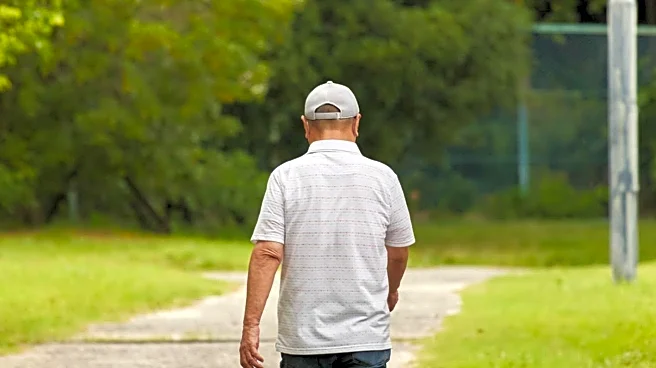What's Happening?
A new fitness trend from Japan, known as 6-6-6 walking, is gaining popularity among wellness enthusiasts. This method involves a six-minute warm-up, a brisk 60-minute walk, and a six-minute cool-down.
The sequence is designed to be performed six times a week, either at 6 a.m. or 6 p.m. The number six is chosen for its memorability and alignment with optimal exercise protocols, providing a balanced cardio boost, meeting daily aerobic needs, and allowing the body to return to a relaxed state. The trend is part of a broader movement towards structured walking routines that offer the benefits of high-intensity interval walking without the impact of running.
Why It's Important?
The 6-6-6 walking trend highlights a growing interest in low-impact, structured exercise routines that can be easily integrated into daily life. Walking is widely recognized for its health benefits, including reducing the risk of chronic diseases, improving mental health, and enhancing physical resilience. This trend could influence public health by encouraging more people to engage in regular physical activity, potentially reducing healthcare costs associated with sedentary lifestyles. It also reflects a shift towards minimalist and disciplined fitness practices, which may appeal to those seeking efficient and effective exercise solutions.
What's Next?
As the 6-6-6 walking trend gains traction, it may inspire further innovations in fitness routines that emphasize structure and accessibility. Fitness brands and wellness influencers might adopt and promote this method, potentially leading to new products or services tailored to this trend. Additionally, public health campaigns could leverage the simplicity and effectiveness of the 6-6-6 walking routine to encourage broader participation in physical activity, particularly among populations that may be less inclined to engage in traditional exercise forms.
Beyond the Headlines
The 6-6-6 walking trend underscores the cultural influence of Japanese fitness practices, which often emphasize discipline and minimalism. This approach may resonate with individuals seeking a more mindful and intentional exercise experience. Furthermore, the trend's focus on walking aligns with global efforts to promote sustainable and environmentally friendly transportation options, as walking reduces reliance on motor vehicles and contributes to lower carbon emissions.











